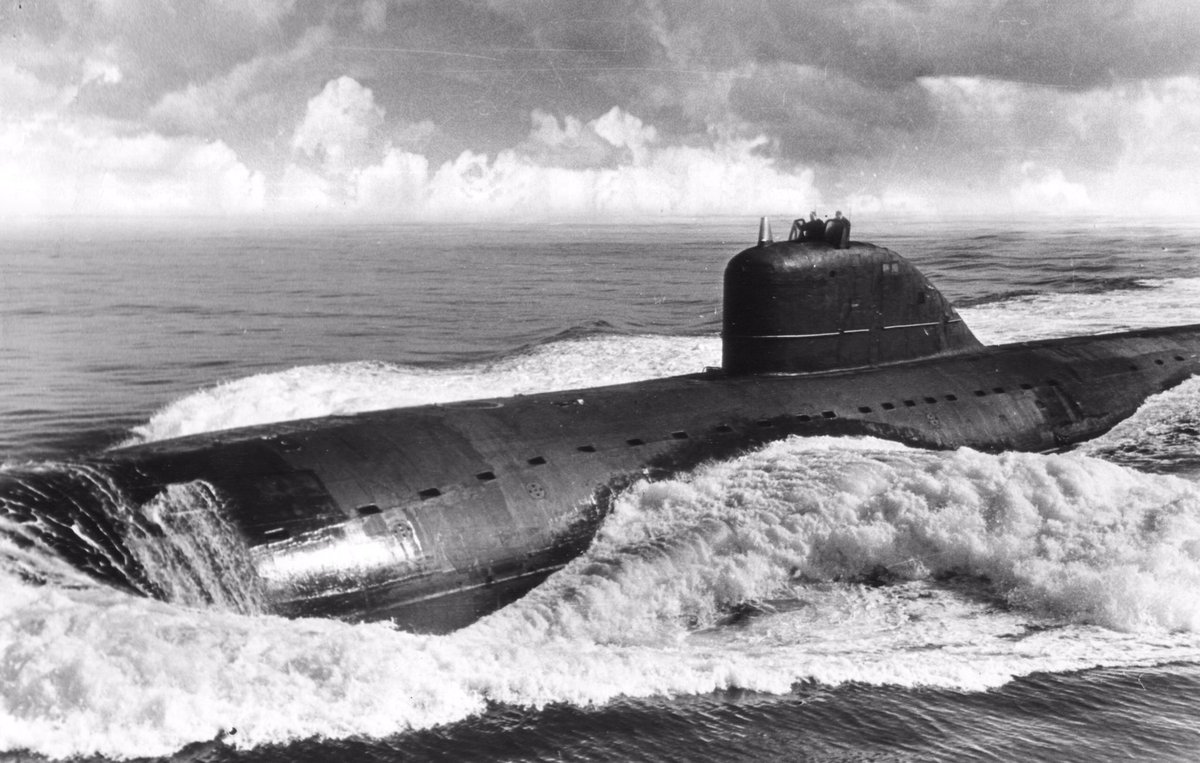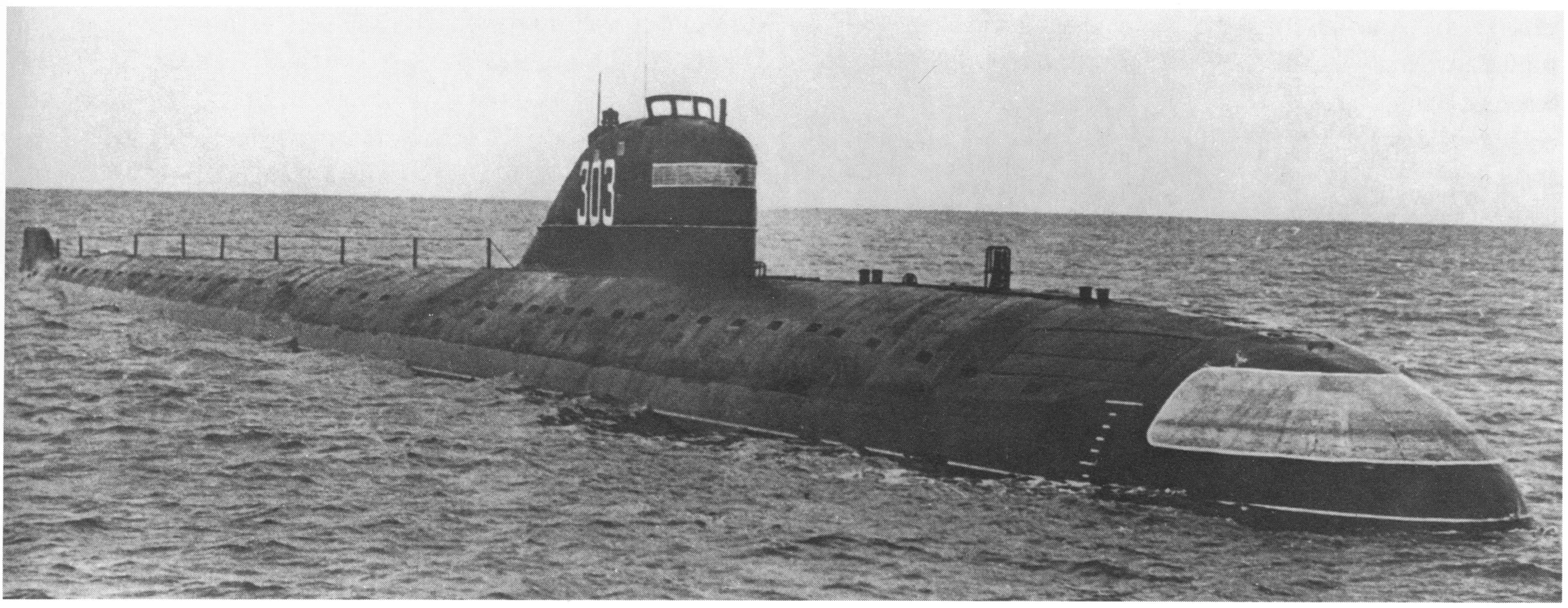1st Nuclear Submarine - We and our partners use cookies to store and/or access information from a device. We and our partners use data for personalized advertising and content, ad and content measurement, audience information, and product development. An example of data that is processed may be a unique identifier stored in a cookie. Some of our partners may process your data as part of their legitimate business interest without seeking consent. To view the purposes for which we believe they have a legitimate interest or to object to this data processing, please use the link below for the list of providers. The consent given will only be used for the processing of data from this website. If you wish to change your settings or withdraw your consent at any time, the link to do so is in our privacy policy, available on our home page.
The first nuclear powered submarine was the USS Nautilus (1955-1979) which featured numerous technological advances. The ship set the standard for how nuclear submarines are built today.
1st Nuclear Submarine

Nuclear submarines have been a constant in global warfare for most of us, but where did the first one come from?
Why Ins Arihant Gives India An Edge Against Its Neighbours
The first nuclear powered submarine was the USS Nautilus (SSN-571). She was commissioned in 1952 and operated until 1980 before being converted into a museum ship. U.S
It was revolutionary in many ways and laid the groundwork for nuclear submarines. His influence is still felt today.
Before we get into the life and times of the world's first nuclear submarine, let's first talk about what a nuclear submarine is and what distinguishes it from an ordinary one. What is a nuclear submarine?
These submarines work with the help of nuclear generators. They achieve their energy creation by splitting atoms, and the resulting heat spins turbines to generate power. Nuclear submarines draw seawater and clean it. This water is not only used for steam, but also serves as drinking water for the crew as harmful bacteria and salt are removed from it.
Diving Deep: 65 Plus Years Of Nuclear Powered Subs > U.s. Department Of Defense > Story
Early nuclear submarines, such as the USS Nautilus, had problems with their noise, which made them easier targets. However, this flaw has been corrected as technology has advanced. What are the advantages of nuclear power?
The main advantage of nuclear power is sustainability. Traditional submarines, such as those used in world wars, require regular resurfacing to absorb oxygen. Although there are advantages to traditional submarines, nuclear submarines are much more preferable for long distances and extended time below the surface.
Now that we've established what nuclear submarines are and why they're important, let's get back to the history of the USS

What would be the world's first nuclear submarine was conceived in 1950 - just five years after the end of World War II and a few years before the height of the Korean War.
Eugene P. Wilkinson, Who Steered First Nuclear Submarine, Dies At 94
The United States Congress, realizing the speed of nuclear development, quickly ordered a nuclear submarine for the US Navy. The ship will combine the latest developments in submarine technology, while also implementing nuclear capabilities. In June 1952, his horse
Measured 324ft (98.7m) long with a beam of 88ft. She could carry a crew of over 100 officers and was capable of an impressive speed of 20 knots (or 23 mph).
Mamie Eisenhower, wife of President Dwight Eisenhower and First Lady of the United States, broke a bottle of champagne on the bow of the USS.
To celebrate its completion. The submarine was completed years ahead of schedule and in January 1955, the submarine operated with nuclear power for the first time.
U. S. Nuclear Powered Submarines
Nautilus' early years saw it break several records. In the summer of 1958, the submarine completed the first underwater trip to the North Pole. The achievement was notable because it occurred at the height of the US technological rivalry with the Soviet Union. The Soviets had recently launched the Sputnik space satellite, but did not yet have a nuclear submarine. Operation Sunshine
The North Pole expedition was called Operation Sunshine and the voyage saw the ship travel 1,830 miles under the ice - breaking submarine records at the time.
Found that navigating under the ice sheet is very complex. It was feared that the submarine would lose oxygen and the generators would freeze. At one point the crew even considered using torpedoes to break the ice if the crew became disoriented and lost.

Space and the ocean were and still are considered the final frontiers of human exploration, and the US claim to develop the first nuclear submarine went a long way to asserting their dominance over Soviet Russia. Later, career and retirement
China And Russia In Mysterious New Submarine Project
Was assigned to Submarine Squadron 10 in Connecticut. She participated in NATO exercises and made numerous tours in Europe.
On April 9, 1979, the Nautilus undertook its final voyage. Departing from Groton, Connecticut, the ship traveled to Vallejo, California, arriving on the West Coast on 26 May. It ended the historic career of the USS.
Crew members who participated in Operation Sunshine received a Presidential Unit Citation Ribbon in recognition of their efforts. In the later years of his career, the USS
Was plagued by a noise problem that made her an increasing target for enemy submarines. Where is the USS Nautilus Today?
Do U.s Admirals Have Reason To Be Concerned About The Yasen M Nuclear Submarine?
After her decommissioning, the USS Nautilus was converted into a museum ship and declared a National Historic Landmark in May 1982.
Today, the ship attracts thousands of visitors from around the world and can be found in Groton, Connecticut - the town where the ship spent most of its illustrious career.
The submarine is regularly refurbished to keep it in pristine condition. More than 250,000 people visit it each year and it continues to be an icon of nuclear technology. Although never in service, the ship was considered one of the crown jewels of the United States. Final thoughts
It was a vital part of submarine technology. His career is long over, but his legacy in modern submarine construction is still felt.
Uss Nautilus Commissioned
And so ends the story of the world's first nuclear submarine. Almost 25 years of service and thousands of miles traveled did
When did folding steering columns come out? Folding steering columns are part of a wider system of safety features in modern cars, but it took a long time to get there.
History of Hoover DamLearn all about the history of Hoover Dam, one of the largest hydroelectric plants in the US.
When was the hydroelectric plant invented? Learn all about the history of renewable hydropower, including its inventor, where it was used, and a brief history. Nuclear powered submarine USSNautilus (SSN-571). Painting, watercolor on paper, by Albert Murray, 1959. Photograph Naval and Heritage Command, 88-195-HL.
Russia Is Building 2 More Ballistic Missile Subs That Worry Rivals
USS Nautilus (SSN-571) was commissioned at Groton, Connecticut on 30 September 1954 with Commander Eugene P. Wilkinson as the ship's first commanding officer. The construction of the Nautilus—the world's first nuclear-powered submarine—was made possible by the successful development of a nuclear propulsion plant by a group of scientists and engineers under the leadership of Captain Hyman G. Rickover in the Naval Atomic Reactors Branch. Energy Commission. After commissioning, Nautilus remained docked for further construction and testing over the next several months. On January 17, 1955, it was developing nuclear power. After sea trials and preliminary acceptance by the Navy, Nautilus headed south to be scuttled on 10 May. En route to Puerto Rico, she remained submerged, traveling 1,381 miles in 89.8 hours, the longest submerged voyage to that date by a submarine and the fastest sustained rate of submergence ever recorded for a period of more than an hour. In July and August, Nautilus conducted rigorous exercises with hunter-killer groups in Narragansett Bay, Rhode Island, and off Bermuda. She ended her year by visiting several East Coast naval bases, a battery of torpedo firing tests and standardization tests.
The following year, Nautilus operated from the Naval Submarine Base in New London, Connecticut, where the effects of a submarine with increased speed and endurance were tested in contemporary anti-submarine warfare practices. The study found that anti-submarine practices, such as those used during World War II, were ineffective against a non-surface submarine that could dive deeper and clear a search area in record time. Between tests, Nautilus conducted press tours and hosted several Navy and Capitol Hill dignitaries.
On February 4, 1957, Nautilus logged its 60,000 nautical miles. It also marked another first for the ship, as the submarine entered General Dynamics Corporation's Electric Boat Company division in Groton to replace the nuclear fuel core in the Westinghouse Electric submarine's thermal reactor. In early April, Nautilus operated in Bermuda with the USS. Seawolf (SSN-575) - the second nuclear-powered submarine - before departing for the US West Coast on 15 May. While there, Nautilus participated in several exercises designed to familiarize Pacific Fleet units with the capabilities of nuclear submarines. He returned to New London on July 21.

On August 19, the Nautilus departed New London for its first voyage under the Arctic ice pack. The 1,383-mile journey was significant because previously American submarines had not traveled in the frozen northern oceans because of electric oil.
A Brief History Of U.s. Navy Fleet Ballistic Missiles And Submarines
Submarine honolulu, usn submarine, kona submarine, atlantis submarine, barbados submarine, bowfin submarine, submarine center, submarine design, submarine watch, maui submarine, oahu submarine, cozumel submarine
0 Comments